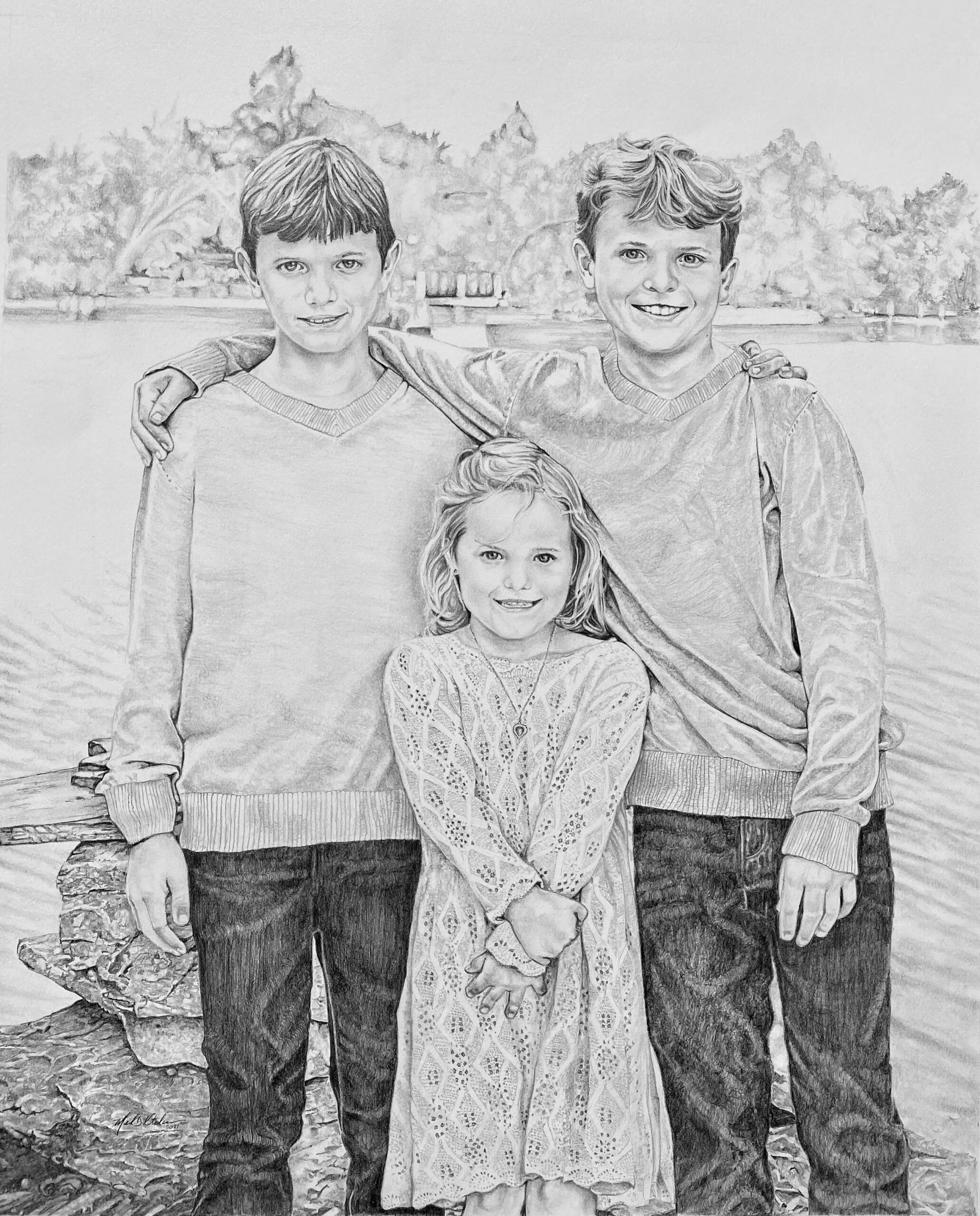Capturing Love: The Art of Hand-Drawn Family Portraits
Family portraits have long been a cherished way to capture the essence of loved ones, preserving memories that can be passed down through generations. In an age dominated by digital imagery, hand drawn family portraits offer a uniquely personal touch, celebrating the artistry that comes from the human hand. Each line and stroke conveys emotion, individuality, and an intimate connection that photographs sometimes struggle to capture.
The beauty of hand drawn family portraits lies not just in the final product, but in the process itself. An artist takes the time to observe and interpret the personalities, relationships, and stories that define a family. This art form is a timeless expression of love and connection, transforming simple moments into treasured keepsakes that reflect the heart and soul of those portrayed. Whether as a gift for a loved one or a statement piece for the home, these portraits resonate with warmth and authenticity, reminding us of the beauty found in our everyday lives.
The History of Family Portraits
Family portraits have a rich history that dates back centuries, serving as a means to capture not only the likeness of individuals but also the essence of familial connections. In ancient cultures, family depictions were often tied to status and lineage, showcasing the importance of ancestry and heritage. These early representations often appeared in the form of painted frescoes, sculptures, or intricate tapestries that celebrated the achievements and characteristics of noble families.
During the Renaissance, the art of portraiture flourished, with artists like Leonardo da Vinci and Raphael elevating the craft to new heights. This period saw a shift towards a more personal approach, where families commissioned portraits to commemorate significant milestones or to convey their wealth and sophistication. Alongside oil paintings, a growing interest in capturing family likenesses extended to more accessible mediums such as drawings, which provided a quicker and less expensive option for families wishing to immortalize their members.
As society evolved, so too did the practice of creating family portraits. The 19th century marked the rise of photography, which transformed how families recorded their images. However, hand-drawn family portraits retained their charm and significance, allowing for artistic expression and personalization that photography could not achieve. Today, the art of hand-drawn family portraits continues to thrive, blending traditional techniques with contemporary styles to celebrate the unique stories and bonds of modern families.
Techniques for Hand-Drawn Portraits
Creating hand-drawn family portraits requires a blend of artistic skill and personal touches. One fundamental technique is the use of line work to define the subjects. Artists often start with light strokes to outline the basic shapes of faces and bodies, ensuring proportions feel natural. This initial sketching phase allows for adjustments without the pressure of committing to darker lines. Once the outlines are established, artists can refine the details, emphasizing features like the eyes and mouths to capture the unique expressions and personalities of each family member.
Shading is another essential element in hand-drawn portraits. Developing a range of tones helps to add depth and dimension, making the figures appear more lifelike. Artists often employ techniques such as hatching and cross-hatching to build up areas of shadow. By varying the pressure on the pencil or using different tools for shading, subtle gradations can be achieved, which enhance the three-dimensionality of the portrait. This technique also helps to evoke mood, allowing the finished piece to resonate emotionally with viewers.
Finally, incorporating elements of the family’s environment can personalize the artwork even further. Artists might include meaningful backgrounds or objects that reflect the family's interests and experiences. From a cozy living room scene to a favorite park, these settings not only complement the subjects but also tell a story. By harmonizing the figures with their surroundings, the portrait captures not just the likeness of the family, but also the essence of their shared life and love.
Personalizing Your Portrait Experience
When it comes to hand drawn family portraits , personalization is key to creating a piece that truly represents your family's essence. Start by selecting a setting that holds meaning for you, whether it’s your home, a favorite park, or a memorable vacation spot. This backdrop can enhance the portrait and reflect your family's story, making the artwork even more special. Think about the emotions and memories tied to these locations, as they can contribute to the overall warmth of the final piece.
Another important aspect of personalization is the choice of poses and expressions. Discuss with the artist how you envision each family member's role in the portrait. You may want everyone to have a specific expression or even a unique activity that showcases their personality. This is your opportunity to articulate what makes your family unique, whether it's a playful engagement between siblings or a serene moment of togetherness. The more details you provide, the more the artist can capture your family's character.
Lastly, consider adding personal elements to your hand drawn family portrait. This could include incorporating favorite items, such as pet toys, books, or heirlooms that symbolize your family's journey. These thoughtful additions can elevate the piece from a simple portrait to a rich tapestry of your life together. Collaborating closely with the artist on these elements ensures that the final artwork resonates deeply with you and your loved ones, creating a cherished memory that will last a lifetime.
